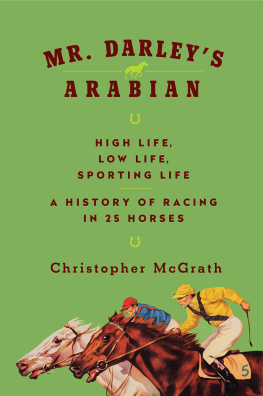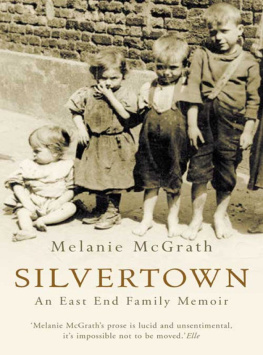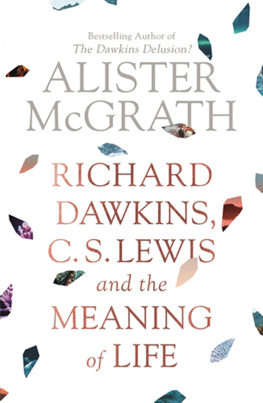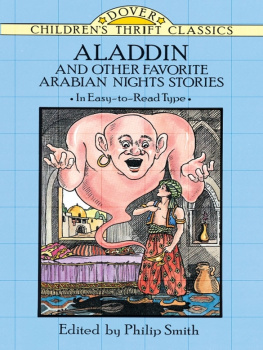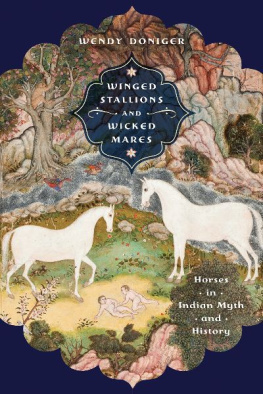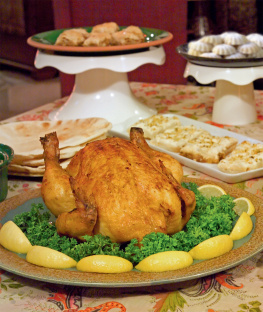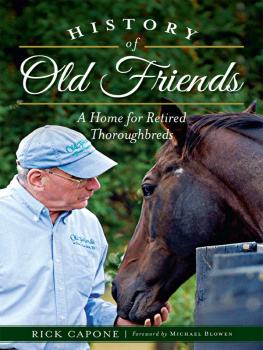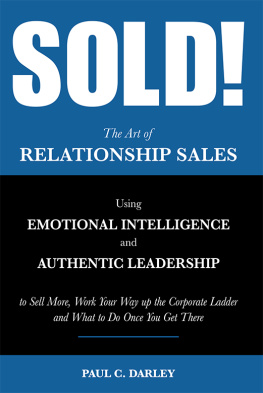

MR. DARLEYS ARABIAN
Pegasus Books Ltd
148 West 37th Street, 13th Floor
New York, NY 10018
Copyright 2017 by Christopher McGrath
First Pegasus Books hardcover edition March 2017
All rights reserved. No part of this book may be reproduced in whole
or in part without written permission from the publisher, except by reviewers who
may quote brief excerpts in connection with a review in a newspaper, magazine,
or electronic publication; nor may any part of this book be reproduced, stored in a
retrieval system, or transmitted in any form or by any means electronic, mechanical,
photocopying, recording, or other, without written permission from the publisher.
ISBN: 978-1-68177-338-4
ISBN: 978-1-68177-390-2 (e-book)
Distributed by W. W. Norton & Company, Inc.
A man aint so different from a horse or a mule, come long come short, except a mule or a horse has got a little more sense.
William Faulkner
M R DARLEYS ARABIAN has needed the help of many different trainers, riders and grooms to reach the finishing post, and I am extremely grateful for their collective patience and expertise.
In the first instance, Catherine Clarke, my agent at Felicity Bryan Associates, made sure the horse was saddled and shod in the best of stables.
And then Georgina Laycock, my editor at John Murray, somehow kept faith that Mr Darleys Arabian was worth steering through numerous extra circuits in heavy going.
Several of her colleagues also provided skilled assistance in getting the horse across the line, without recourse to whip and spurs, notably Caroline Westmore, as managing editor; while Martin Bryants copy-edit brushed through every tangle in the draft with the most meticulous of currycombs. Any remaining knots or flaws are, of course, my own responsibility. Many thanks also to Alice Laurent, Juliet Brightmore, Amanda Jones and Douglas Matthews.
The horse depended for daily sustenance, throughout, on the staff and benefactors of the Bodleian Library in Oxford but the diet was transformed, at a critical stage, by an invitation to Lexington, Kentucky, to browse the extraordinary collection of books, newspapers and photographs that qualify the Keeneland Library as an unrivalled resource of the international Turf. Many thanks to everyone who made my ten days in the Bluegrass as enjoyable as they were rewarding: notably Becky Ryder, the infinitely painstaking and enthusiastic director of the library; Bill Thomason, Keeneland president, for inaugurating the scholarship programme; Rogers Beasley and Jacqueline Duke, for their charming hospitality; and Ed Prosser, for enlisting all these and many other good people to so undeserving a cause.
Fortunately researchers in Britain have another remarkable Turf library rather closer to home, which was shared with his usual generosity by Tim Cox to whom, along with Helena McGrath, I extend additional thanks for reliably astute remarks on an early draft of the opening chapters.
For primary sources regarding Thomas Darley, I am indebted to the archivists at Northallerton (North Yorkshire County Records) and Kew (National Archives); and also to George and Sara Winn-Darley.
Many thanks for time and insight to Aidan OBrien, in particular; also John Magnier, Richard Henry, John Fulton, Lady Cecil and Sir Julian Rose. And for the provision of wheels, digs and much laughter, as ever, Eddie Wiley.
Lastly, and most importantly, the race could never have been run at all without the support from the grandstand (heckles notwith-standing) of three generations ofWillis-Bunds: Jane; Jo; Fred, Johnnie and Stella; nor without a sire and dam, Michael and Karin, to eclipse every other pedigree in the story.
It soon became evident that a conventional bibliography would be highly impractical for a panorama stretching over three centuries and four continents. The alternative may still seem wildly uneven, books cited under one chapter often being no less pertinent to another, but I hope that it might at least be vaguely coherent. The following sources were invaluable throughout:
Oxford Dictionary of National Biography
Roger Mortimer, Richard Onslow and Peter Willett (comp.), Biographical Encyclopaedia of British Flat Racing (Macdonald & Janes, 1978)
Websites www.bloodlines.net; www.tbheritage.com
The various histories of Newmarket: Richard Onslow, Headquarters: A History of Newmarket and its Racing (Great Ouse Press, 1983); Frank Siltzer, Newmarket: Its Sport and Personalities (Cassell, 1923); Laura Thompson, Newmarket: From James I to the Present Day (Virgin, 2000); R. C. Lyle, Royal Newmarket (Putnam, 1945); J. P. Hore, The History of Newmarket and the Annals of the Turf (A. H. Baily & Co., 1886). A lavish new gem is David Oldrey, Tim Cox and Richard Nash, The Heath and the Horse: A History of Racing and Art on Newmarket Heath (Philip Wilson, 2014). Also consistently useful, in broader terms: Roger Mortimer, The Jockey Club (Cassell, 1958); Theodore Andrea Cook, A History of the English Turf (Virtue, 1905); J. C. Whyte, A History of the British Turf (Henry Colbourn, 1840); Theophilus Taunton, Famous Horses, with Portraits, Pedigrees, Principal Performances etc. (Sampson Low, Marston, 1901); Roger Longrigg, The English Squire and His Sport (Michael Joseph, 1977); Mike Huggins, Flat Racing and British Society 17901914 (Cass, 2000).
Chapter 1: The most esteemed race amongst the Arrabs both by Syre and Dam
Thomas Darleys letter is at the North Yorkshire County Record Office in Northallerton (DAR.CP1) a moving document for any man of the Turf to hold in his hands. The Darley family archives there also feature several items relating to the dispute with Marriotts executors, one noting that Thomass estate included an Arabian Horse worth three hundred pounds (ZDA DDDA/3).
The National Archives at Kew hold extensive records of the Levant Company in Aleppo, including several tantalising glimpses of Thomas Darley. He first appears as early as November 1685 SP110/73 (5:2) and is repeatedly referred to as Capt or Cape Darley. (The unnamed portrait at Aldby does show an expatriate wearing some kind of military coat.) His letter home suggests that Darley may have bought his colt around April 1702, when a Company correspondent writes: Am just now mounting with Cape Darley to Kifreen & those parts for 4 or 5 dayes (SP110/22.141).
Captain Wakelins log is also at Kew (ADM51/479:6) and describes taking merchant vessels under his wing as the convoy overcame tempests and French privateers before reaching Kinsale on 12 May.
Darleys death is recorded as the result of a fall from his Horse (SP110/23.73) but our worthy friend is discovered to have been guilty of villany and knavery in the paperwork he left his partner Marriott (SP110/23.263268). The latters misfortunes reach a revolting climax after a riding accident of his own (SP110/23.376).
David Oldreys unpublished monograph on the Darleys and their Arabian was very useful.
The description of negotiations with Bedouin tribesmen quotes from Horse Dealing in Syria, 1854in Blackwoods Edinburgh Magazine (1859).
For Thomas Darleys environment, there is no better starting point than Dr Alexander Russells The Natural History of Aleppo (A. Millar, 1756). Other portraits of Aleppo include two by inquisitive clergymen: The Diary of Henry Teonge, Chaplain on board his Majestys Ships Assistance, Bristol, and Royal Oak Anno 1675 to 1679
Next page
